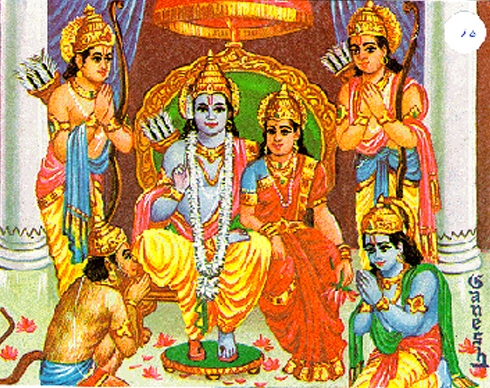As I began the graphic novel it came clear to me, that I had to do a bit more research in order for to understand where this novel was coming from, where it was going and what I and it's target audience could get from it. So off to research I went. I found out that Ramayana is an ancient Sanskrit tail, that is a major text in the Hind religion. It was written between 500 and 100 BC. The story line is about Prince Rama and his wife Sita, who is kidnapped by King Ravana, who tries to convince Sita to marry him though she refuses. By the way King Ravana has ten heads is quite evil... ( no wonder she refuses, I think I would have as well..) So with the history of the tail in mind, the graphic novel is easier for me to understand. Sita's Ramayana is an adaptation of these Hindu tails that were originally paintings. I think it is awesome that it is now written as a graphic novel which also uses pictures to get it's point across. The use of color in this graphic novel is simply beautiful! The colors are bright and vivid, much like those that we see in super hero comics. In most "historic" novels I have seen the colors are usually dark, but these are bright! Even in the "dark" places of the novel, like in the picture I have below where Sita looks as though she is in a "fire" the colors are bright even though she is in a dark place. The audience of this book is anyone and everyone who is outside of the Hindu culture, but particularly women. This books highlights Sit'a strength as a woman and the things that women go through and the battles we face in life. It also highlights the way of life for Hindus, their culture and religion that has been around for centuries. I find that it can also bring a sense of familiarity to other cultures who read it, as Sita struggles with some of the same battles that other women in other cultures struggle with as well, like honor, love, what is right and what is wrong, trust and loyalty. It educates and entertains the reader in a culture that is not of their own and leaves the reader with an understand of the Hindu way of life they may not have had before, with a familiar connection with our own culture in the same struggles and Ramayana we all face. Below are some pictures from the graphic novel and the last picture is one that I found of a painting of Sita in Ramayana. If you have not read this graphic novel and have an interest in other cultures and their way of life this would be a good book for you to read.



Comments
Post a Comment